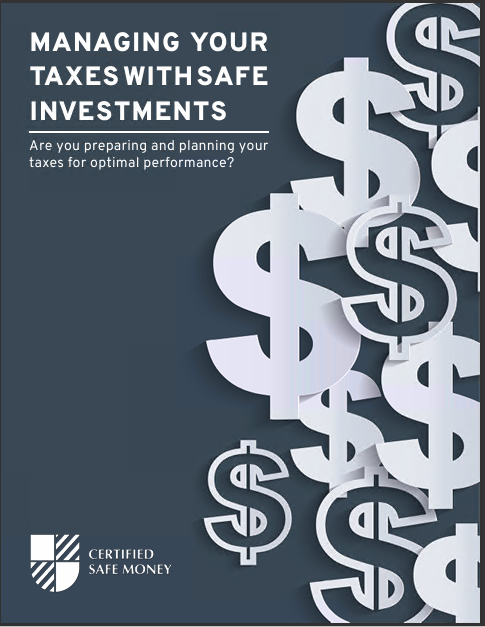Key Takeaways
-
Life insurance provides financial protection and peace of mind, ensuring your loved ones won’t face hardship if you’re no longer around.
-
Not all life insurance policies are created equal; carefully weighing their features, benefits, and hidden drawbacks is critical before making any decisions.
Understanding Life Insurance: More Than Just a Safety Net
Life insurance often seems straightforward: you pay premiums, and your beneficiaries get money if something happens to you. Simple, right? Well, there’s a lot more beneath the surface. It’s essential to dig deeper to truly understand what you’re getting into.
Let’s break down the key features, hidden benefits, and drawbacks nobody usually talks about when considering life insurance.
Why Life Insurance Matters: Beyond the Basics
Protecting Your Family’s Financial Future
Life insurance offers crucial financial protection. If something happens to you unexpectedly, your policy provides your family with funds to cover immediate expenses such as funeral costs, mortgage payments, and living expenses. This prevents your loved ones from experiencing financial strain during an already difficult time.
Debt Doesn’t Disappear
Remember, your debts won’t vanish if you’re no longer around. Your family could be held responsible for your outstanding obligations, like credit cards, loans, or even medical bills. Life insurance can clear these debts and alleviate the financial burden on those you leave behind.
The Core Types of Life Insurance: What’s Best for You?
Term Life Insurance: Affordable and Simple
Term life is the simplest form of life insurance. You select a coverage amount and a specific duration—usually 10, 20, or 30 years. Your beneficiaries receive the benefit only if you pass away during that period.
Pros:
-
Typically the least expensive
-
Simple to understand
Cons:
-
Coverage eventually ends
-
Premiums significantly increase upon renewal
Whole Life Insurance: Lifelong Coverage, Extra Benefits
Whole life insurance lasts your entire life, as long as premiums are paid. It builds cash value, acting as an investment tool alongside insurance.
Pros:
-
Permanent protection
-
Cash value accumulation
Cons:
-
Higher premiums compared to term life
-
Complex structure with fees and commissions
Universal Life Insurance: Flexible but Complex
Universal life combines lifelong coverage with flexibility in premiums and death benefits, along with investment opportunities.
Pros:
-
Flexible premiums and coverage amounts
-
Investment growth potential
Cons:
-
Risks associated with investment returns
-
Potential for policy lapse if poorly managed
Hidden Benefits of Life Insurance: The Lesser-Known Advantages
Cash Value and Borrowing Power
Permanent life policies often accumulate cash value over time. You can borrow against this cash value for expenses like home renovations, education costs, or financial emergencies. It’s a hidden financial tool that many overlook.
Tax Advantages You Didn’t Expect
Life insurance death benefits typically pass tax-free to beneficiaries, providing an efficient wealth transfer method. Additionally, cash value growth within permanent policies can offer tax-deferred gains.
Riders and Extra Coverage Options
Many policies offer riders—add-ons that enhance your policy. Common riders include:
-
Accelerated Death Benefit: Provides funds if you’re diagnosed with a terminal illness.
-
Waiver of Premium: Keeps your policy active without payments if you become disabled.
-
Guaranteed Insurability: Allows additional coverage purchases without health checks.
These add-ons enhance your protection, but they also increase premiums, so evaluate their necessity carefully.
Drawbacks and Pitfalls: The Untold Truths
High Cost for Permanent Policies
Permanent policies are significantly more expensive than term policies. While they offer lifelong coverage and cash value, higher premiums might strain your budget over the long term.
Fees and Hidden Costs
Insurance policies often include fees for administration, commissions, and investment management. These charges reduce your cash value and overall returns, making transparency crucial when choosing a policy.
Complexity Can Lead to Mistakes
Universal and whole life policies can be complicated. If you don’t thoroughly understand your policy or manage it correctly, you risk lower returns, policy lapse, or insufficient coverage.
When Life Insurance Might Not Be Worth It
Life insurance isn’t suitable for everyone. If you’re single, debt-free, or without financial dependents, it might not make financial sense. Consider carefully whether the protection aligns with your personal circumstances and goals.
Timing Your Policy: When to Get Life Insurance
The Earlier, The Cheaper
Buying life insurance younger generally means lower premiums because you’re healthier and less risky to insurers. Waiting increases your cost and risk of developing health conditions that could affect your insurability.
Major Life Changes Signal It’s Time
Life events like marriage, parenthood, home purchases, or career changes often signal the need for life insurance. Reassess your coverage at these critical junctures to ensure you remain adequately protected.
Making the Most Out of Your Policy
Regularly Review Your Coverage
Life insurance isn’t a “set and forget” decision. Regularly review your policy, especially after major life changes, ensuring your coverage remains aligned with your current needs and goals.
Balance Coverage and Costs
Strive for coverage that fits your financial situation. Avoid being underinsured, but don’t overextend your budget either. Consider a policy you can comfortably afford for the long term.
The Application Process: What to Expect
Life insurance typically requires an application, medical examination, and underwriting process lasting anywhere from a few weeks to several months. Be prepared to disclose medical history, lifestyle habits, and financial information.
Shopping Around: Getting the Best Deal
Always compare multiple quotes and policies. Understanding different offerings allows you to identify the best value and find policies matching your unique needs and budget.
Alternatives to Life Insurance: Other Safe Money Methods
Life insurance isn’t your only option for financial security. Other safe-money methods include:
-
Savings Accounts and CDs: Guaranteed returns with minimal risk.
-
Government Bonds: Stable, predictable investments.
-
Annuities: Provide guaranteed income in retirement.
Consider these alternatives as part of your broader financial strategy.
Taking Control of Your Financial Future
Life insurance is powerful, but it’s not one-size-fits-all. Carefully consider your needs, financial situation, and long-term goals before committing. It’s a critical tool, but only when it aligns precisely with your financial plan.
Secure Your Family’s Tomorrow Today
Your decision about life insurance affects more than just yourself—it shapes your family’s financial future. Choose wisely, stay informed, and make your life insurance work for you and your loved ones.










